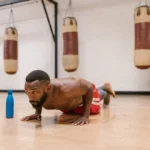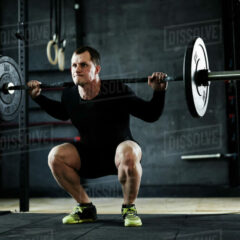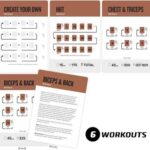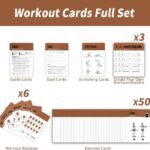Bodyweight exercises are like the hidden gem of the fitness world. No fancy gym equipment is needed. Just your own body and a bit of space. Here’s the deal: Whether you’re a newbie to fitness or someone who’s been at it for years, incorporating bodyweight exercises ensures you’re working with a solid foundation.
There’s a lot of noise out there about weightlifting vs. bodyweight. A common myth is that to build strength, you’ve got to lift heavy weights. That’s just not true. Bodyweight exercises can be equally powerful. Think of them as your backup plan when you can’t hit the gym or when you just like staying in. They allow you to remain consistent and challenge your body in different ways.
Incorporating these exercises into your fitness plan doesn’t mean overhauling your entire routine. It’s about blending them in. They’re perfect for warming up, for recovery days, or even as a standalone workout when you want to switch things up. The idea is to keep your body guessing and engaged. Variety prevents workout fatigue and helps you continue to progress.
In the coming sections, you’re gonna learn more about how to tailor these exercises to fit wherever you’re at on your fitness journey. From beginner to pro, these workouts are like the Swiss army knife in your fitness toolkit. Easy to use, incredibly versatile, and always on hand when you need them.
Beginner-Friendly Bodyweight Exercises
When you’re just starting, keeping things simple and safe is key. You don’t need to jump straight into intense workouts. Start with foundational moves like push-ups, squats, and planks. These exercises effectively engage various muscle groups, making them ideal for building both strength and endurance. Embrace this workout to enhance your fitness and achieve your goals!

Let’s break them down: start with push-ups. They might seem challenging at first, but modifying them by dropping to your knees is a smart move. It’s all about maintaining proper form, which helps avoid injuries and ensures you’re working the intended muscles. Squats are another excellent choice. Keeping your feet shoulder-width apart and lowering yourself as if sitting on an imaginary chair isolates those leg muscles. Planks focus on core stability – try to hold it for 20-30 seconds and build up as you get stronger.

It’s normal to face challenges when you’re new to exercising. The key is staying motivated and avoiding discouragement. Set small, achievable goals. It not only boosts your confidence but also encourages you to come back for more. It could be about doing one more rep this week or holding that plank just a few seconds longer.
Staying motivated can also mean trying new things. Try different variations of each exercise to find what you enjoy most. Remember, it’s your workout. Whether you’re squeezing in a quick session before work or winding down after a long day, every rep counts.
Intermediate to Advanced Techniques
Alright, so you’ve nailed the basics and are now ready for a challenge. It’s the perfect time to amp things up with some intermediate and advanced bodyweight exercises. Plyometrics is your new best friend here. They involve jumping moves like box jumps or burpees, which fire up multiple muscle groups and improve your explosive strength. Just remember to land softly to protect those joints.
Now, as you push harder, keeping an eye on your form becomes even more crucial. It’s easy to slip into shortcuts or bad habits when you’re going all out, but technique beats speed or repetition count every time in terms of results and injury prevention. Take the time to learn each move properly, whether it’s a more complex exercise, such as a handstand push-up or a pistol squat.
Putting together a balanced workout routine is another big step. You want to ensure you’re hitting all your muscle groups equally. For example, incorporating exercises that target your upper body, core, and lower body in a single workout session can enhance your overall fitness and lead to better results. Pull-ups and dips are great for the upper body, while Russian twists can keep your core engaged. Changing things up keeps it exciting and prevents those dreaded plateaus.
Exploring advanced variations isn’t just about physical improvement; it’s also about mental and emotional growth. It’s also a mental game. Mastering new moves builds confidence and makes your workout more enjoyable. Challenge yourself to learn an exercise you’ve previously thought of as too difficult. Breaking past those mental barriers is incredibly satisfying and shows just how far you’ve come.
Creating a Personalized Workout to Foster Longevity
Once you’ve mastered various exercises, tailoring your workout to meet your personal goals is crucial for long-term success. It’s about finding what works for your body type, lifestyle, and ambitions. Whether you’re aiming to build muscle or increase endurance, the key is to blend different exercises and rep schemes that keep you engaged.

Consistency is your friend when it comes to sustaining these habits. While motivation might get you started, habits keep you going. Set regular workout days and stick to them. Factor in rest days, as they’re crucial for recovery and preventing burnout. Listen to your body; it knows when it needs a break and when it can push harder.

Sharing goals and celebrating achievements with someone can improve your fitness journey, making it more enjoyable and rewarding. Besides, it’s always good to have someone to spot you during those trickier moves or to offer encouragement when you’re having a tough day.
Ultimately, your fitness journey is about fostering a sustainable relationship with exercise. It’s about doing it in a way that you’ll want to continue for years to come. The right balance of challenge and rest helps maintain a lifetime of healthy habits. By integrating these elements into your routine, you’re not just working out—you’re setting the foundation for long-term well-being.
https://www.wealthyaffiliate.com?a_aid=352a86b2
https://weightliftingforpower.com/the-best-barbell-exercise-card-sets/
https://weightliftingforpower.com/bodyweight-training/
https://weightliftingforpower.com/incline-bench-press-technique-guides/
https://weightliftingforpower.com/10-bodyweight-moves-for-ultimate-strength/
https://weightliftingforpower.com/beginners-guide-to-hiit-workouts/






















